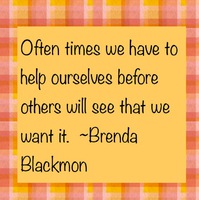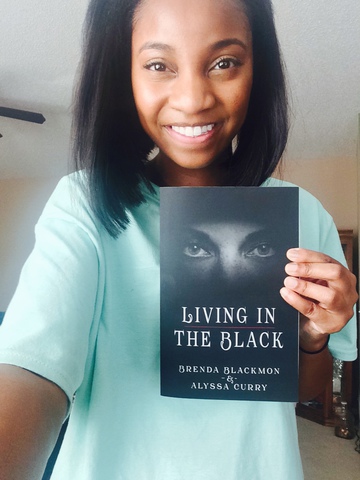
Domestic Violence Statistics
Domestic violence can be defined as a pattern of abusive behavior in any relationship that is used by one partner to gain or maintain power and control over another intimate partner.
Domestic violence can be physical, sexual, emotional, economic, or psychological actions or threats of actions that influence another person. This includes any behaviors that intimidate,
manipulate, humiliate, isolate, frighten, terrorize, coerce, threaten, blame, hurt, injure, or wound someone.
Physical Abuse: Hitting, slapping, shoving, grabbing, pinching, biting, hair-pulling, biting, etc. Physical abuse also includes denying a partner medical care or forcing
alcohol and/or drug use.
Strangulation Penal Code 22.01: Surprisingly, 10% of violent deaths in the U.S. are attributted to strangulation. The majority of these case are women.
Sexual Abuse: Coercing or attempting to coerce any sexual contact or behavior without consent. Sexual abuse includes, but is certainly not limited to marital rape,
attacks on sexual parts of the body, forcing sex after physical violence has occurred, or treating one in a sexually demeaning manner.
Emotional Abuse: Undermining an individual’s sense of self-worth and/or self-esteem. This may include, but is not limited to constant criticism, diminishing one’s abilities,
name-calling, or damaging one’s relationship with his or her children.
Economic Abuse: Making or attempting to make an individual financially dependent by maintaining total control over financial resources, withholding one’s access to money,
or forbidding one’s attendance at school or employment.
Psychological Abuse: Causing fear by intimidation; threatening physical harm to self, partner, children, or partner’s family or friends; destruction of pets and property;
and forcing isolation from family, friends, or school and/or work.
Domestic violence can happen to anyone regardless of race, age, sexual orientation, religion, or gender. Domestic violence affects people of all socioeconomic backgrounds and education levels.
Domestic violence occurs in both opposite-sex and same-sex relationships and can happen to intimate partners who are married, living together, or dating.
Domestic violence not only affects those who are abused, but also has a substantial effect on family members, friends, co-workers, other witnesses, and the community at large. Children who grow up witnessing domestic violence are among those seriously affected by this crime. Frequent exposure to violence in the home not only predisposes children to numerous social and physical problems, but also teaches them that violence is a normal way of life – therefore, increasing their risk of becoming society’s next generation of victims and abusers.
Sources: National Domestic Violence Hotline, National Center for Victims of Crime, and WomensLaw.org.
National Statistics
- On average, nearly 20 people per minute are victims of physical violence by an intimate partner in the United States. During one year, this equates to more than 10 million women and men. (1)
- 1 in 3 women and 1 in 4 men have experienced [some form of] physical violence by an intimate partner within their lifetime. (1)
- 1 in 5womenand 1 in 7 men have experienced severe physical violence by an intimate partner in their lifetime. (1)
- 1 in 7 women and 1 in 18 men have experienced stalking victimization during their lifetime in which they felt very fearful or believed that they or someone close to them would be harmed or killed. (1)
- On a typical day, there are more than 20,000 phone calls placed to domestic violence hotlines nationwide.
- Intimate partner violence accounts for 15% of all violent crime. (2)
- Intimate partner violence is most common among women between the ages of 18 – 24. (2)
- 19% of intimate partner violence involves a weapon. (2)
- Approximately 1 in 5 Black (22.0%) and White (18.8%) non-Hispanic women, and 1 in 7 Hispanic women (14.6%) in the United States have experienced rape at some point in their lives.
PHYSICAL/MENTAL EFFECTS ECONOMIC EFFECTS
- The cost of intimate partner violence exceeds $8.3 billion per year. (6)
- Between 2003 and 2008, 142 women were murdered in their workplace as a result of intimate partner violence. This amounts to 22% of workplace homicides among women. (4)
SEXUAL ASSAULT
- 1 in 5 women and 1 in 59 men in the United States has experienced rape in her lifetime. (1)
- 9.4% of women in the United States have been raped by an intimate partner in their lifetime. (1)
- STALKING
- 19.3 million women and 5.1 million men in the United States have experienced stalking in their lifetime. 66.2% of these female stalking victims reported stalking by a current or former intimate partner. (1)
HOMICIDE
- A study of intimate partner homicides found that 20% of victims were not the intimate partners themselves, but family members, friends, neighbors, persons who intervened, law enforcement responders, or bystanders. (3)
- 72% of all murder-suicides involve an intimate partner and 94% of the victims of these murder-suicides are female. (3)
REFERENCES
- Black, M.C., Basile, K.C., Breiding, M.J., Smith, S.G., Walters, M.L., Merrick, M.T., Chen, J., & Stevens, M. (2011). The National Intimate Partner and Sexual Violence Survey: 2010 Summary Report. National Center for Injury Prevention and Control, Centers for Disease Control and Prevention. Retrieved from: http://www.cdc.gov/violenceprevention/pdf/nisvs_report2010-a.pdf
- Truman, J. & Morgan, R. (2014). Nonfatal Domestic Violence, 2003-2012. U.S. Department of Justice, Office of Justice Programs, Bureau of Justice Statistics. Retrieved http://www.bjs.gov/content/pub/pdf/ndv0312.pdf
- Smith, S., Fowler, K., & Niolon, P. (2014). Intimate Partner Homicide and Corollary Victims in 16 States: National Violent Death Reporting System, 2003-2009. American Journal of Public Health, 104(3). DOI: 10.2105/AJPH.2013.301582
- Tiesman, H., Gurka, K., Konda, S., Coben, J., Amandus, H. (2012). Workplace Homicides Among U.S. Women: The Role of Intimate Partner Violence. Annals of Epidemiology, 22(4). DOI: 10.1016/j.annepidem.2012.02.009
- Rothman, E., Hathaway, J., Stidsen, A., & de Vries, H. (2007). How Employment Helps Female Victims of Intimate Partner Abuse: A Qualitative Study. Journal of Occupational Health Psychology, 12(2). DOI: 10.1037/1076-8998.12.2.136
- Violence Policy Center. (2012). American Roulette: Murder-Suicide in the United States. Retrieved from: http://www.vpc.org/studies/amroul2012.pdfwww.vpc.org/studies/amroul2012.pdf
- Department of Justice website http://www.justice.gov/ovw/domestic-violence





